|
|
| home | features | exhibitions | interviews | profiles | webprojects | gazetteer | links | archive | forum |
|
Lucy Lippard on place, places and conceptual art Lucy Lippard is arguably the most significant art-writer of her generation. She was interviewed by Rupert White in Falmouth University College on 22/5/10, where she was guest speaker at 'The Falmouth Convention'.
LL 35 years and I was born there too, so 35 plus 9. As a child you moved about a lot. Is that right? Yeh. We lived in NY, then after the Second World War we moved to New Orleans, then to Charlottesville, Virginia, then to New Haven, Connecticut, then I moved back to New York after school. Were any of these places particularly formative? I think New Orleans was. There was a culture clash. I was a yankee and my family was from New England and New Orleans was a completely different culture, and so is New Mexico. I like being out of place in a funny way. That's why I'm interested in place: I've never really been in place. Though I was a native New Yorker. You made your name as a writer in new York in the sixties. Were you aware that you were right at the epicentre of the art world at the time? (above: pictured with Robert Smithson, Nancy Holt and Ilya Pagonis 1970.) Not really. It was what interested me, and it was my scruffy friends, then they turned out to be important and rich! Did it surprise you? It's always a surprise in the art world as to who makes it and who doesn't. Its such a crapshoot. There are artists who are just as good as others who didn't ever make their mark.
I love archives. I worked in a library for my first and only job. That book when it came out in '73 was, and remains the definitive account of conceptual art. That certainly was unexpected. The publisher was very kind to let me do that because it was a very odd book. I was amazed when they allowed me to do it. Did you go on to become more overtly political and more interested with feminism as the Seventies wore on? No. It was the sixties, it was during the Vietnam War that I became politicised, and feminism automatically came out of that. It was people who were in the anti-war movement. We began to think about our own circumstances and realised that we were the underdogs too. Then you came to live in the UK. Was it in 1976? 77 to 78 Had you come over to do research for 'Overlay'? No. I came to write a novel - which I wrote. I had a wonderful time writing it and never particularly had an urge to publish it. I made a half-assed attempt to publish it, and somebody almost published it, and then decided they didn't want to publish first novels, though it was actually my second. Then I fell for the stones. It was just coincidence that I ended up in such a place: I didn't know they existed. I started hiking on Dartmoor and - oh my God - there they were. Did you see many other prehistoric monuments in the UK eg in Wiltshire? Yeh I saw a lot of them. I went to Avebury and Stonehenge and what have you.
I conceived it at the end of the year. I got really interested in it and I was thinking ' now how do I deal with this because I'm not an archeologist?' But you had an intimate knowledge of Earth Art and Earth artists and this is largely what the book is about. But it was the intimate knowledge of the farm and the area I lived in that really started the whole 'place' business. Its very British (laughs)... So it was while you were in the UK that you started thinking a lot more about 'place'? Yes. I got so obsessed about place whilst living in this farm in Devon that I wrote a short story which I never published about a woman who got so involved in a place that she disappeared into it (laughs). She went into the land and never reappeared. Where in Devon was this? Near Totnes. Ashwell Farm* near Halwell. We never went to Halwell. It's close to Dartmoor. I inherited their retired cow-dog that was a border collie and he and I explored everyday. And you could walk - this is what I loved about Britain - you could walk through farm-yards and people would just say 'hello'. As long as you didn't leave the gates open and your dog didn't chase the stock, you were fine. I thought I would get that in New Mexico but there is no trespassing everywhere. It's not at all like Britain. I had this purple down jacket which was obvious way out in the fields and the children coming home from school would say 'Ethan there's your Mum!'. So you had a young child at that time? He was 12 turned 13. Did you still think of New York as your home at that time? Yes. So you went back to NY after that year? So 'Overlay' was written in New York and 'Lure of the Local' as well? 'Lure of the Local' was written in New Mexico. In between I did a lot of political stuff, so place wasn't my focus the whole time. I was teaching one semester a year in Boulder, Colorado for a while and my grandparents were both from Colorado and I got somehow thrown back into the 'place thing' there. And politics. I did a tremendous amount of political stuff.
I never make decisions I sort of go with the flow (laughs). I had friends who live there and I started visiting. Everyone in Boulder thought that if I left NY I'd go there but it wasn't quite what I wanted to do. I wanted to be further out There are other artists in NM. Bruce Nauman is there isn't he? Bruce and Susan live outside the same village I live in. And Nancy Holt lives there. One of my friends came there first and I started staying with her. She didn't know Nancy, but Nancy called me and said 'do you know of a place I can rent because I think might want to come down there?' and so one thing led to another... It helped having a network of like-minded people? At least I knew somebody in the village. New Mexican villages are quite closed if you're Anglo. But this village was much more open. I was interested in the comment you made about how you think of monumental earth art as being urban art colonising the landscape. Colonising is a provocative term - but I think it's the right one - and this is an interesting example of the way your thinking has changed over the years. I did something in the early 90's called 'Land Art in the Rear View Mirror', and I was working on the 'Lure of the Local' and was zeroing in on 'the local' I started looking at Land Art in a very different way: a very critical way. Nancy - who was Robert Smithson's wife as well as being an accomplished Land artist herself - what would her view be on that? Oh Nancy doesn't approve of what I do particularly! (laughs). But I've just finished an essay for a book on hers.
I'm sure that is part of where it comes from. You're very aware of this when your traipsing around looking at rock art - which after the stones became my big thing. Do native American artists still struggle to get recognition they deserve? Yes, and they're still ghettoised. The United States is a big place - so the idea of a regional art scene has a different meaning. Yes, it really does. I was in Australia with an artist called Vivienne Binns - who is a community artist - and I went out with her and her trailer and little dog for a couple of weeks into the hinterlands of New South Wales and that was very interesting because Australia is a big country. But Australia and all the British Colonies - and it comes from the tiny regionalism that you have here - have a much better sense of community arts. At that point American community arts were very uninteresting and I came back with an excitement about community arts. Is that changing in the States? Yes it's changing. In the early eighties I got involved with some people who had something called the 'Neighbourhood Arts Programmes National Organising Committee' or NAPNOC, and it sounded so knock-knock they changed the name to 'Alliance for Cultural Democracy'. I was doing political work in the city organising artists but not in communities, and they convinced me that community art and local art were really the same thing and should be meshed a lot better, and that was really interesting and a learning experience. When we went to live in Devon I'd been told that the accent changed every five miles and I thought how could that possibly be? And then my son came back from comprehensive school and he's got a really good ear, he's a musician, and he said 'mum this guy talks like this and this guy talks like this'...and I realised this was right. So you've got this microscopic regionalism. Whereas in the United States very few places have roots as deep - but that's what's nice about New Mexico - it was settled in 1598 long before the Pilgrim Fathers. I'm noticing the term rural art being used at the moment in UK art discourse. It's something Virginia Button alluded to today. I think it may be a relative new concept. Is this a term or concept used much in the States? We don't really talk about rural art in the States. Why would that be? Because its always been an urban art transferred to the countryside. You can't call it rural. And so the people themselves have not been involved there is much more of a sense of involving people.
And it has been for years. I remember the Paddington Print Shop in the 70s and I went back to NY and did a show about British artists from the Left because I was so taken by the fact that they had a very much broader view and were more political. Americans are not very politically educated most of us had never read Marx even though we called ourselves Marxists... That maybe relates to something you said earlier about the network associated with conceptual art radiated out from New York towards Europe rather than to elsewhere in the States. There was an affiliation with Europe. And Canada. I'm just doing an online thing about Canadian conceptualism, and I went to Canada a lot and I had friends in Canada. Was that the late sixties? Yes - with the N E Thing company. The N E Thing company was maverick in every sense. It was one guy - Iain Baxter - with an immense amount of enthusiasm. It wasn't really mainstream conceptualism. Even though there was conceptualism on the West coast and on the East coast and you could say it originated on the West coast with Ed Ruscha it really was a New York thing. That's my perception of it because I was there. It wasn't well received initially. It wasn't something you could send to e.g. St Louis. You also said that it emerged in different countries simultaneously amongst artists who were unaware of each other's practice. So it was something about the zeitgeist? I always thought it was that...ideas in the air. It was Iain Baxter who convinced me of that because when I went to Vancouver I didn't really know him, but he was like 'come and see me'. Because he was a different artist he was doing it differently in a different context, but he had a lot of similar ideas that were just floating around. I don't know who started it. Seth Siegelaub who I lived with for a couple of years - you're not interested in the full disclosure - but he was as much an artist as the artists that he arranged things for. He was the one who started them thinking. (Picture below right shows the four artists who showed in Seth Siegelaub’s exhibition ‘January 5-31, 1969’: (left to right) Robert Barry, Douglas Huebler, Joseph Kosuth, Lawrence Weiner). Someone like Richard Long wasn't really that aware of what was happening in the States. He may not have been. He was already working in the landscape doing the kind of interventions we know him for... That's what was interesting about Richard and Hamish Fulton. It was a British conceptualism. Sol Lewitt was the person who let me know about all of this because he was already well known by this time and was traveling in Europe a lot.
Yes. He started coming back with all this information with new friends that he put me in touch with. It's interesting the way information and ideas are exchanged between artists. You've been a really important part of that as someone who has documented a lot of artworks. I like the idea of being a catalyst or someone that helps form networks. The process has changed over the years. Art magazines were all printed in B and W then. I still love B and W (laughs). So most of the conceptual art works were also documented in black and white: it was very part of the aesthetic. And then there is the Studio International of 1970 in which you 'curated' 8 or so artists... That was Seth again. He came up with contexts that made artists think in different ways. Which brings us to the internet... (Pause) It's useful, I know, but it doesn't turn me on. But it's just my age... But its interesting to speculate to what extent the art that is made utilises the technology that is available to distribute it. A lot of conceptual work was conceived so it could be published in magazines... That was a part of Seth's contribution. What he was was a distributor-as-artist. He had the idea to distribute it in this way. Not dissimilar to Maciunas and the Fluxus approach... I never paid much attention to Fluxus, and I've been castigated for it constantly. It never interested me and I'm not quite sure why. Dada was my art-historical field if I ever had one so I don't know why it didn't turn me on. The minimal aesthetic did turn me on for whatever reason. I was married to Robert Ryman at the beginning of all that.
Fluxus was much messier too. But yes I was part of the reaction thing. Greenberg: he was a vicious son of a bitch and I didn't like him and I didn't like the way he dictated stuff to artists, and I finally stood up against him in public, which was a really good thing for me. And he thought I was a silly little girl. Did you do that in writing? No, in a lecture. I just asked him to define 'quality'. He was always on about quality: what he liked was quality and what I liked wasn't. And I went up to him and he said 'if you don't know what quality is I can't tell you. If you can't tell the difference between red and green...' or something really snotty. And I said 'you mean Greenberg and Rosenberg?'. Because they were rivals - and everybody laughed. It wasn't that important, but he didn't like it. And I went up and introduced myself afterwards and he said: 'Oh you're Lucy Lippard I thought you were a schoolteacher from the Bronx'. That's a nasty put down... At the point it was a really nasty put down. He told somebody else he couldn't understand how the art world was going to hell because someone like Lucy Lippard could be taken seriously! He saw you as a real threat by the sound of it... Apparently yeah. When I moved to NY in late 58 he was king and I've always disliked people being kings (laughs) and so my anti-authoritarian thing just took off after him. All the artists I knew didn't like it either and I was getting it all from the artists. I was with one of them when I stood up and he immediately got up and got away from me, like 'no, I don't have anything to do with her!' (laughs). Fascinating. And was it his personality that accounted for the influence he ended up having? He was just a bloody dictator. He used to charge people to go to their studios. Everything I hoped I wouldn't stand for. His writing defined American modernism. It did. Totally. And he was a wonderful writer. But all the people that hung out with him were nasty too. Kenneth Noland had me in tears once. He could be really vicious. And I wasn't used to that and my friends weren't that way. The art world is full of people that are ambitious... But with conceptualism this was one of the things we were trying to get away from by having things that didn't sell for very much money.
Artists still think they're geniuses... That was part of the thinking behind the systems approach. The main difference between abstract expressionism and conceptualism is to do with the way the artist acts in the work. And that has sort of dissolved. But it is part of that time. That is why I like community arts, but I like community arts with an edge. Because they're collaborative? And the artist's ego is not so in play. Sometimes it is but if it can be kept under control it's fine...an artist has to have a big ego otherwise they would never get anywhere. No-one would ever pay any attention to someone who didn't. But you think is its important for artists to be generous and altruistic where possible? Yes. Generous. That came with feminism. I didn't get into that because we take it so for granted. But that was another whole way of looking at the world and it changed my life forever...
Writer, educator, critic, curator, activist. Lucy Lippard received a Bachelor of Arts from Smith College and a Master of Arts from the Institute of Fine Arts (New York). Lippard is the recipient of many awards, such as a Guggenheim Fellowship, the Frank Mather Award for Criticism from the College Art Association, two National Endowment for the Arts grants for criticism, and an honorary Doctorate of Philosophy from the Nova Scotia College of Art and Design University. She has written for publications such as Art in America, The Village Voice, and Third Text, and has published over twenty books, including the landmark Six Years: The Dematerialization of the Art Object from 1966 to 1972, an annotated chronology documenting the emergence of conceptual art practices. In addition, Lippard is co-founder of Printed Matter, HERESIES: A Feminist Publication on Art and Politics, Political Art Documentation/Distribution, and Artists Call Against U.S. Intervention in Central America. Lippard has curated over fifty exhibitions. Consciously not affiliated with a particular institution, Lippard is based out of New Mexico. *audio recording was not clear here
|
|
|

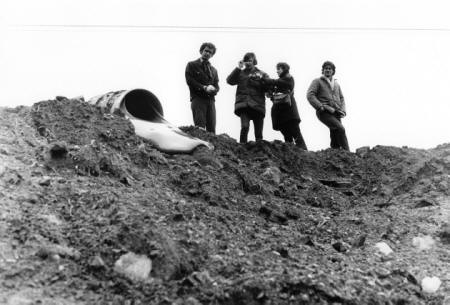
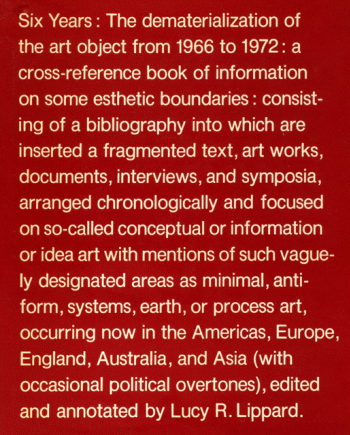
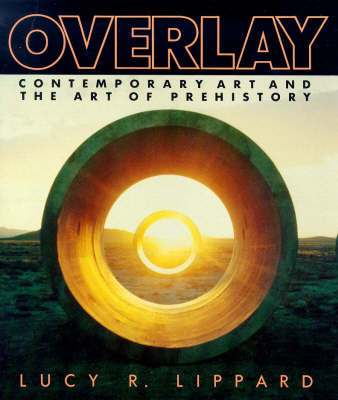 Is
that the time you conceived 'Overlay'?
Is
that the time you conceived 'Overlay'? 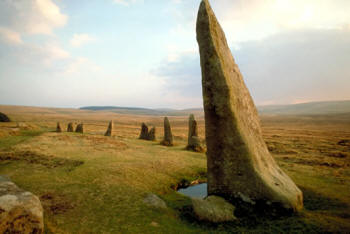
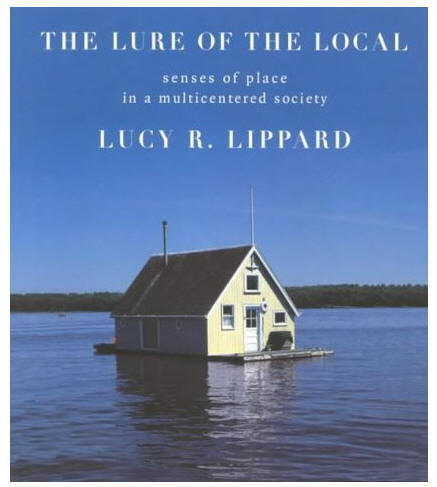 This
sense of the landscape being
colonised must relate to your interest in native American culture, which
you must have become more conscious of when you moved from New York.
This
sense of the landscape being
colonised must relate to your interest in native American culture, which
you must have become more conscious of when you moved from New York. So
the UK is further on in that sense or at least there is a different
dynamic...
So
the UK is further on in that sense or at least there is a different
dynamic...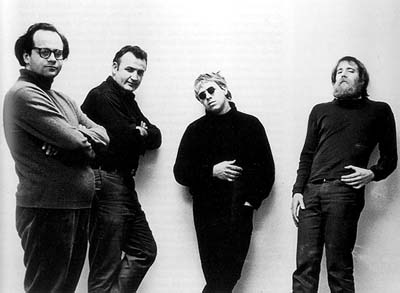 And
you were very close...
And
you were very close...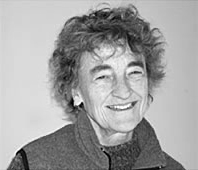 And
getting away from the idea of the artist as genius?
And
getting away from the idea of the artist as genius?